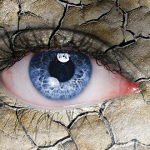From the rheumatologist’s point of view, notes Dr. Daniels, it’s important to first reduce oral symptoms and improve oral function. These strategies can include:
- Prescription of cevimeline or pilocarpine hydrochloride for dry mouth;
- Treating and retreating the erythematous oral candidiasis, a cause of mouth burning, usually with an oral antifungal, but sometimes with a topical vaginal antifungal if there is no visible salivary secretion;
- Selective recommendation of saliva substitutes to prevent nocturia, a frequent cause of sleep disruption in these patients; and
- Referral of patients to dentists who have worked with head and neck radiation or SS patients, or to multidisciplinary SS clinics in academic medical centers throughout the country.
There are also long-term clinical issues in these patients, Dr. Daniels says. In addition to the unique dental caries (also common in patients undergoing radiation therapy), about one-quarter of patients with SS will also develop palpable enlargement of the salivary glands. Lympho-epithelial lesions, which also appear in the gastrointestinal tract, lungs, and lymph nodes, require monitoring, because approximately 5% of them may progress to lymphoma.
Protecting the Eyes
Only in the last 10 years has dry eye been considered an inflammatory disease, says Gary N. Foulks, MD, a cornea specialist and Keeney Professor of Ophthalmology at the University of Louisville, Ky., and immediate past chair of the Sjögren’s Syndrome Foundation. He spoke about evaluating and managing ocular manifestations of SS.
“We now know that inflammation of the lacrimal glands, the lid margin, and the ocular surface can result in damage to the ocular surface, with symptoms of visual disturbance, reduced visual acuity, and discomfort,” he notes. Evaluation of dry eye comprises measuring production, stability, and osmolarity of the tear film; ocular staining; assessing eyelid function (frequency and completeness of the blink); and examination of the lid margin. Inflammation of the lid margin can result in anterior blepharitis (resulting in crusting around the eyelash base) or posterior blepharitis, which is often due to meibomian gland dysfunction. Plugging of the meibomian glands results in loss of lipids, leaving the tear film unprotected and prone to increased evaporation. Some signs of chronic meibomian gland dysfunction include telangiectasia, dimpling, and notching of the eyelid.
Management of dry eye is keyed to its severity and is now often guided by results of the International Dry Eye Workshop (DEWS), a consortium of experts that conducted an evidence-based review of the literature. Management guidelines are available on the Tear Film and Ocular Surface Society website, www.tearfilm.org. The typical sequence of treatments, says Dr. Foulks, is:
- Tear film enhancement or supplementation with a variety of different solutions, including polymers to both enhance the volume of the tear film and to stabilize it to prolong tear break-up times;
- Control of inflammation, formerly with the use of topical steroids, is now best accomplished with cyclosporine A or oral omega-3 essential fatty acids; and
- Control of lid margin disease with oral doxycycline, azithromycin eye drops, or even massage after application of hot compresses to the lid.
Once inflammation is under control, the next step is to focus on retention and protection of the tear film. Ophthalmologists use sustained release preparations as well as punctal plugs to prevent drainage. One newer example of the latter method uses a thermodynamic acrylic polymer that is inserted into the canaliculus and swells to obstruct the drainage. Finally, to protect the ocular surface, clinicians may advise use of new generation bandage soft contact lenses with high oxygen permeability or hard gas-permeable scleral lenses, which provide a reservoir of tears beneath the lens.
The Axis of Pathogenesis
Although some experts have focused on the management and understanding of symptoms in SS, rheumatologist Xavier Mariette, MD, PhD, of Bicêtre Hospital, Paris-Sud University, France, and others like him have been exploring its pathogenetic characteristics. The same internal signature, the same genetic predisposition, and the same involvement of B-cell activating factor of the tumor necrosis factor family have led Dr. Mariette, a leading SS researcher, to term Sjögren’s “the lupus of the mucosa.”

